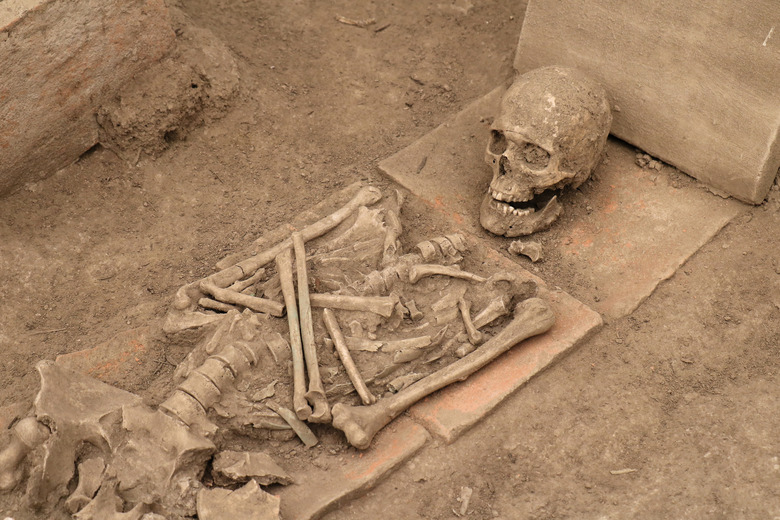How To Determine The Age Of A Skeleton
The skeleton is not only the remnant of a life once lived, it can also be a lasting blueprint and history of that life. In forensics and archeology, determining the age of a skeleton is often one of the first steps in rebuilding not only the life but the death in order to discover answers. But how do you determine the age of a skeleton? Although science can not get an exact age from bones, an approximate age can be determined. Radio Carbon or Carbon-14 testing is widely used throughout the world for testing fossils and skeletons despite controversy about its accuracy. But the method is sometimes unavailable, and in those cases an examination of the bones is the method used. There are two ages determined at the time of examination, the age at time of death and the overall age.
Step 1
Observe the skeleton and the remains around it. The first step will be to decide if the bones are human or animal; then look to growth and disintegration to determine the approximate age.
Step 2
Measure the skeleton. If missing bones make it impossible to measure the entire height, use the femur, or thighbone, the longest bone in the human body. Since the femur makes up about one-quarter of the body's entire length, it can be used for an approximate calculation.
Step 3
Determine the gender of the skeleton to help in the aging process. Certain points on the skull, as well as the width of the hips, can be used to distinguish male from female. The gender of a prepubescent child may be impossible to determine.
Step 4
Study the skull of the skeleton. Not only does the size of the skull change as we age, the joints or fontanels between the bones change, becoming smaller with age.
Step 5
Check the skeleton's teeth or lack of teeth. If the skeleton has wisdom teeth, the person was past the age of 18. If there is significant bone loss, it indicates a more advanced age. Permanent teeth in a child's skull indicate that the person reached late childhood.
Step 6
Look for ossification (thickening) of the bones. Ossification occurs throughout the body and there are over 800 points in the body to observe this. Bones also fuse together as we age. X-rays make growth plates and their rate of fusion clearly visible.
Things Needed
- Skeleton
- Measuring device cm & inches
TL;DR (Too Long; Didn't Read)
Determining the age of a skeleton should be done by a person trained in anthropology.
References
Cite This Article
MLA
Sautelet, Darcy. "How To Determine The Age Of A Skeleton" sciencing.com, https://www.sciencing.com/determine-age-skeleton-5529692/. 13 March 2018.
APA
Sautelet, Darcy. (2018, March 13). How To Determine The Age Of A Skeleton. sciencing.com. Retrieved from https://www.sciencing.com/determine-age-skeleton-5529692/
Chicago
Sautelet, Darcy. How To Determine The Age Of A Skeleton last modified March 24, 2022. https://www.sciencing.com/determine-age-skeleton-5529692/
